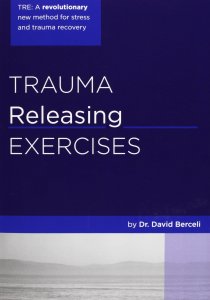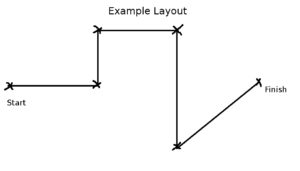Would you believe that it can be very traumatic just to hear about someone else’s traumatic experience? It’s called vicarious trauma and here is an interesting quote from the following book:

Trauma Releasing Exercises (TRE): A revolutionary new method for stress/trauma recovery
“It is very common for people who have not experienced the same trauma as their loved ones to be even more bitter, vengeful, angry and resentful than the person who endured and survived the traumatic experience. Imagination is a powerful thought process of the human species. It can however, be a dangerous and powerful weapon if it is not connected to the body’s experience of reality. This is why those who suffer can often forgive more easily than those who only imagined another’s suffering. Those who imagine the suffering of another are often more angry, bitter, and vengeful than the victim. As a victim, it is oftentimes easier to forgive because one’s own suffering and sorrow are informed by the reality of the body’s survival.”
So simply put, when you live through a traumatic experience your body knows you survived and helps you feel relief. If you recount a traumatic experience (in vivid detail) it is unlikely you can get the listener to also experience the relief. Similarly if you read violent/messed up news stories, watch things like crime dramas, or watch shows such as real life murder mysteries (see the South Park Murder Porn episode) you can experience the trauma but never the relief. Despite it being second hand it can add up and leave your body physiologically showing signs of trauma, which as you can guess, is not good.
I was reminded of this quote when recently reading an article on Fragging in the Vietnam War.
This Sergeant went on to tell me he was on a patrol with a commanding officer who insisted they follow him into what they, as experienced soldiers, knew was an ambush. The officer refused to budge and finally one of the men shot him dead. I asked the Sergeant what he did and he said he had no choice but to arrest the offender who had probably saved lives.
Quite a story right? The next line is “He was eerily calm relating these stories.” What I think the author really meant to say is, “I perceived it to be eerie that he was so calm while relating this story because I found it so disturbing.” To the Sergeant telling the story, he has lived with it everyday for the past 40 years, it’s old news, something he may have struggled with for decades, perhaps with the help of several therapists, and eventually he was able to relay the story “calmly.” But to the listener, this is fresh news and quite a vivid picture. The listener doesn’t know about the 10 years it took to cope with it, nor do they have any idea that imagining this story in their head can bring it to life for their body.
Now imagine reading/watching news stories like this every day of your life and you get the idea of why the modern “news”, aka click bait, is horrible for your health. For your reference, I just turned off my news blocker and here are the top stories on Yahoo! News (note, this is just the main site, not the crime site or the please scare me site)
- Pentagon: US, partners begin airstrikes in Syria
- WH intruder had 800 rounds of ammo
- 3 missing Afghan soldiers found at Canadian border
- New Jersey hiker killed by black bear: police
- California wildfire crews brace for weather shift
My heart rate went up just reading those headlines.
A few more musings and a personal note:
Perhaps this is why the current generation seems desensitized. Day in and day out we are exposed to these kind of violent news stories, and to not be desensitized would be a death sentence. But I don’t think we’re truly desensitized. I recall a time when this was really pounded into my soul. A brief bit of background, I played a lot of video games involving killing and watched plenty of rated R movies with plenty of body parts flying before the following story takes place. If anyone was going to be desensitized to violence by games and movies as the media and crazy parents would have us believe, it would have been me.
WARNING THE NEXT LINK IS VERY GRAPHIC, DON’T CLICK THE LINK UNLESS YOU’RE PREPARED.
In AP US History class sophomore year my teacher showed us a video about the Vietnam war. The video started off boring, like most history videos, then out of nowhere there was a scene of a handcuffed man being shot in the head and killed.
I don’t remember if I actually did, but my instinct was to jump out of my chair and scream. Holy shit! That guy was just fucking killed! In real fucking life! There didn’t appear to be any warning, in the video it didn’t look like there was an argument; the man is tied up and just standing there handcuffed.Then a uniformed man nonchalantly walks around him, pulls up his gun, and shoots the handcuffed man in the head. Don’t feel too bad for the handcuffed man though, he had just finished leading a death squad in the killing of the families of enemy officers.
I was absolutely shocked. I wanted to puke (and honestly I do right now after watching the video again). All those years of being “desensitized by violent video games and movies,” and I reacted just like anyone would expect a normal kid to react.
I later sat down and thought about why I reacted that way despite all my “experience” with violence and I realized that this was the first time I had ever seen anyone actually die. In the back of my head I felt like I had seen someone die before, after all I had seen plenty of movies with blood and guts all over the place and even played games where I actively killed people; but this completely different and I knew it on a fundamental level, instantly, without hesitation. Years of violent games and movies that were supposed to be fucking up my brain, had near zero impact on my reaction to seeing death for the first time. Not even death, a video of a death. The games and movies didn’t mess me up; instead, what really got to me were things I knew to be real, things like that video and the news.
Interestingly enough, South Park had an episode about this as well as the video above. In this episode the kids are playing detective and get an old couple to pay them to solve the mystery of what happened to a pie on the windowsill. They found out the dog did it, but come up with this really fucked up explanation about how the old man was planning to kill his wife to eat the pie but the dog beat him to the pie before he had a chance to kill his wife. The old people are like, WTF?! What are you kids watching on TV?! You might think they would say NCIS or Law and Order SVU, but their reply is simply: “nothing, just the news.”
Oh and if you haven’t seen Bowling For Columbine , it’s basically about how Canada also has violent video games and movies, but doesn’t have the same violent news the US seems to be obsessed with, and how this could be connected with the difference in violent crime.
, it’s basically about how Canada also has violent video games and movies, but doesn’t have the same violent news the US seems to be obsessed with, and how this could be connected with the difference in violent crime.

